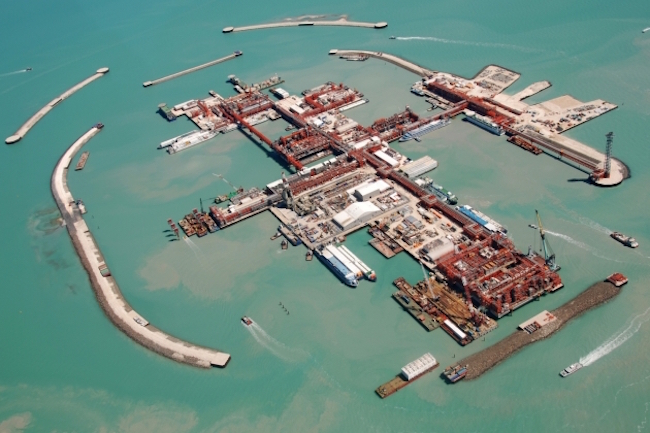
By Nauman Hassan
The Central Asian region become the center stage in the wake of international power politics on the basis of Geo-economic potential of this region. The regional and global players are trying to set mechanism to explore all the potential of independent but still fledgling Central Asian states for their political and economic development. This region has world’s best growth performance with about 8% GDP that indicates geo-economic potential of these states. The key economic activity of Central Asian states is the export of energy reserves that boost up the power and influence of the region. However, the geo-economic reserves are not equaly distributed among these states as they all are the part of Caspian Sea Basin.
Iran, Russia, Turkmenistan and Kazakhstan are bordering a naturally enrich inland body of water that is Caspian Sea Basin. According to estimates, total reserves of Caspian Sea Basin harbors are 449 TCF (trillion cubic feet) of natural gas and 48 BB (billion barrels) of oil that is the largest supply in Turkmenistan, that is more than total gas reserves of America (North and South) and Asian oil reserves. Nevertheless the oil has to travel by pipeline or rail to foreign markets as Caspian Sea itself has no maritime gateway to other seas of the world. This large quantity of the Caspian’s fuel reserves has brought in the world major energy firms to plan new production operations through the pipelines which are required to ensure the availability of these energy reserves to the various market. It is also obvious that the energy prospective of this region is not fully realized because of the uncertainty that exist regarding legality status of Caspian Sea. Regardless of efforts, so far among these coastal states only Kazakhstan, Azerbaijan and Russia have successfully formulated agreement for the rights of development and demarcating possession of the Sea’s resources.
Since independence has emerged as one of the largest curator of gas reserves. Turkmenistan, since its independence has emerged as one of the largest curator of gas reserves. Modern Turkmenistan possesses not only a huge resource base of hydrocarbons on land and at sea, but also the possibility of its use. Experts estimate the total potential hydrocarbon resources of the country up to 71.2 billion tons of oil equivalent, of which 53 billion tons are on the land, and 18.2 billion tons – of the sea. The most significant part of these volumes – over 70 percent – accounts for natural gas. Ranking 4th in the world in natural gas reserves, Turkmenistan is seeking to expand access to the international gas market, to maximize the use of their natural resources. At present, the Turkmen gas is exported in three areas: in Russia, Iran and China.
It is comparatively less endowed country with regards to oil and gas reserves as compared to Kazakhstan or Turkmenistan, yet 171 proven oil and gas fields are currently in the possession of Uzbekistan. Uzbekistan also has proven natural gas reserves of around 1.9 Tcm, however continuing export of gas may result in gradual depletion of resources due modest chances of future discoveries. Uzbekistan’s has not yet done any significant discovery regarding fuel reserves so it’s also unassertive. With recent discovery of giant Kashagan oil field, proven oil reserves of Kazakhstan have touched the figure of 40 billion barrels, with 3.2 % of the world proven oil reserves. The current proven 2.5 Tcm reserves of gases are also expected to increase to 3.3 Tcm in next decade but with the condition of future exploration.
Transportation of the oil and gas wealth of the landlocked Central Asia is perhaps the most challenging task for all the competing players in order to reach the energy rich Central Asia. Except those which are located in northern Iran, pipelines that have completed before 1997 are directed to Russia through different Central Asian states. Caspian region oil is being transported through several other pipelines to Europe specifically to U.S markets and these pipelines are have enough capacity to transfer present availability of oil to the targeted region. Brief overview of the few significant routes and major oil &gas pipeline projects throughout Central Asia are Trans-Caspian gas pipeline, Baku-Tbilisi-Erzurum (BTE) Pipeline, Turkmenistan-China Gas Pipeline, Turkmenistan-Afghanistan-Pakistan-India Pipeline (TAPI) and Central Asia Centre gas pipeline system (CAC). First two of following oil pipe lines have been completed and oil is being exported while there remaining are nearing completion Caspian Pipeline Consortium (CPC), Kazakhstan Caspian Transportation System (KCTS), Kazakhstan-China Pipeline and Baku-Tbilisi-Ceyhan (BTC).
Besides Hydrocarbon, the region is also profusely rich in mineral reserves. Kazakhstan and Uzbekistan produces around 20% of the world’s uranium with Uzbekistan as the world’s 10th largest producer. The Kumtor goldmine in Kyrgyzstan is the eighth largest in the world. Though Kyrgyzstan and Tajikistan are not blessed with much hydrocarbon resources, yet Tajikistan is leading with potential hydropower production capacity of around 40,000 MW, with Kyrgyzstan following at potential of 26,000 MW. Two countries have large surplus generation in spring and summer seasons and have greater potential to contribute in meeting the energy needs of the other South and Central Asian countries. Kazakhstan is the major producer of grains in the region, while Uzbekistan is at 6th position in production and 2nd in exporter of cotton. With just 8% contribution to GDP, Kazakhstan is comparatively less dependent on agriculture. More than 80% of the cultivated land in Turkmenistan, Tajikistan, Kyrgyzstan and Uzbekistan is productive.




